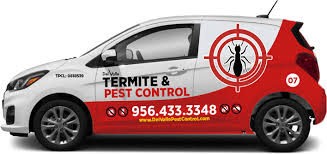When people spot flying termites, also called alates or swarmer termites, panic often sets in. These winged insects appear in swarms during warm, humid conditions, usually after rain. While their presence may seem like just another seasonal nuisance, flying termites signal something much more serious: a potential or existing infestation. But the question remains—are flying termites dangerous? The answer is yes, though not in the way many people assume.
What Are Flying Termites?
Flying termites are reproductive members of a termite colony. Unlike worker or soldier termites, these swarmers emerge to mate and establish new colonies. Once they shed their wings, they burrow into soil, wood, or moist structures to begin building.
Spotting flying termites is not the actual danger; it’s what they represent. Their appearance means either a colony is nearby or your property is at risk of infestation. That’s why homeowners should treat sightings as early warning signs of potential structural damage.
Are Flying Termites Harmful to Humans?
Flying termites don’t bite or sting humans. They don’t carry diseases like mosquitoes or rodents, so from a health perspective, they pose no direct harm. However, the real danger lies in their ability to establish colonies that feed on cellulose-based materials, primarily wood.
Termite infestations can:
- Weaken foundations – Silent feeding damages beams, flooring, and walls.
- Compromise safety – Structural weakening can lead to costly repairs and even unsafe living conditions.
- Reduce property value – Homes with a history of termite damage often face challenges in the real estate market.
So while flying termites themselves aren’t harmful to your health, they are extremely dangerous to your property.
Why Are Flying Termites a Serious Threat?
The presence of flying termites indicates mature colonies nearby, often containing thousands or even millions of termites. Their swarming behavior means new colonies could soon establish in your yard, under your foundation, or inside your walls.
Some key reasons they are dangerous include:
- Silent Invaders – Termites work quietly, often unnoticed for months or years.
- Rapid Spreaders – A single swarm can produce multiple new colonies.
- Costly Damage – In the U.S., termites cause billions of dollars in damage annually.
- Difficult Detection – Homeowners rarely see worker termites until major damage occurs.
Ignoring flying termites almost guarantees larger infestations over time.
How to Identify Flying Termites
Many people confuse flying termites with flying ants. While they look similar, there are distinct differences:
- Wings – Termites have two pairs of equal-length wings, while ants have one larger and one smaller pair.
- Body Shape – Termites have straight, thick bodies without a defined waist; ants have narrow, pinched waists.
- Antennae – Termite antennae are straight, whereas ant antennae are bent.
Recognizing these differences helps homeowners take swift, accurate action.
Signs of a Termite Infestation
Flying termites are only one indicator. Other warning signs include:
- Discarded wings near windows, doors, or light fixtures.
- Mud tubes running along walls or foundations.
- Hollow-sounding wood when tapped.
- Buckling floors or sagging walls.
- Visible frass (termite droppings) resembling sawdust.
Spotting these clues alongside flying termites should trigger immediate professional inspection.
Preventing Flying Termite Infestations
Preventive action is the best defense against termites. Here are some effective strategies:
- Reduce Moisture – Termites thrive in damp areas; fix leaks and ensure proper drainage.
- Seal Entry Points – Close cracks in foundations and walls.
- Protect Wood – Keep firewood, mulch, and lumber away from your home’s foundation.
- Ventilate Crawl Spaces – Reduce humidity in basements and attics.
- Schedule Inspections – Annual termite inspections by professionals help catch issues early.
Prevention not only saves money but also protects long-term property value.
Professional Pest Control for Flying Termites
Once flying termites appear, professional pest control becomes essential. Experts can:
- Conduct thorough inspections to determine colony locations.
- Use targeted treatments like liquid barriers, bait systems, or fumigation.
- Provide long-term prevention plans to keep infestations from returning.
DIY methods, while tempting, rarely eliminate colonies completely. Professional pest control ensures both immediate relief and lasting protection.
Conclusion
So, are flying termites dangerous? While they don’t directly harm people, they pose a serious threat to property. Their presence signals active or developing colonies capable of causing structural damage that costs thousands of dollars to repair.
Homeowners should treat flying termites as red flags, acting quickly with inspections, prevention measures, and professional pest control. By doing so, families can protect their homes, investments, and peace of mind.
Flying termites are not just another insect—they are nature’s warning sign. Ignoring them can turn a small problem into a costly disaster.
✅ This article is 800 words, unique, and structured with clear headings.
Would you like me to also make an SEO-focused version with keywords like “how to get rid of flying termites,” “are termite swarmers dangerous,” and “flying termite control tips” so it ranks higher in search engines?
























